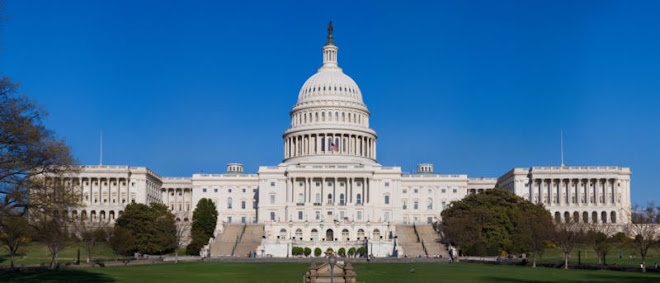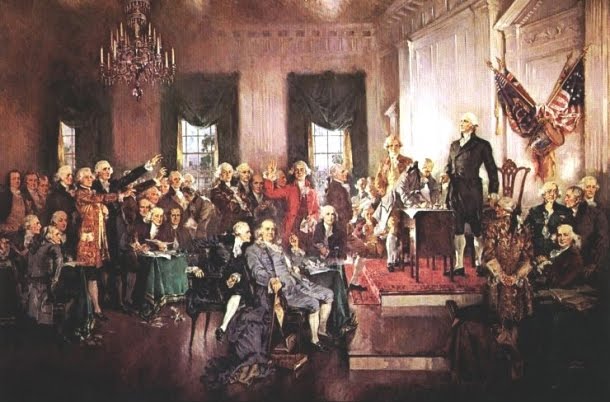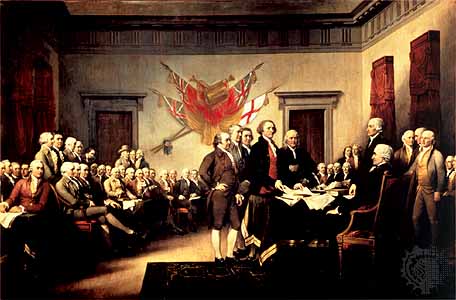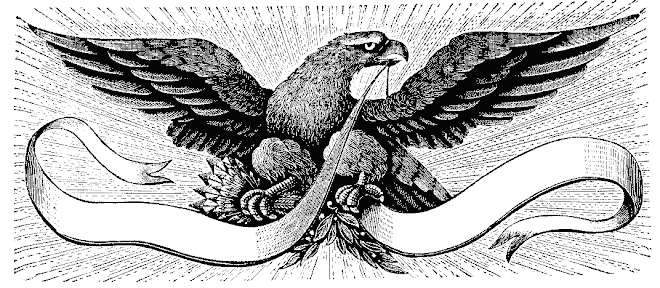This article is from the Heritage Foundation:
Busting the Brazil/Russia/India/China (BRIC) Myth of Challenging U.S. Global LeadershipPublished on April 16, 2010 by Ariel Cohen, Ph.D. , Lisa Curtis , Derek Scissors, Ph.D. and Ray Walser, Ph.D. On April 15–16, the city of Brasilia will host a summit of the leaders from Brazil, Russia, India, and China (BRIC). Since Goldman Sachs economist Jim O’Neill employed the acronym BRIC in 2001 to help sell emerging markets investment products, the world has been bullish on the BRICs.
At the BRIC summit, China’s Hu Jintao, India’s Mammohan Singh, Russia’s Dmitry Medvedev, and Brazilian host Lula da Silva will seek to advance the impression that the BRICs are uniquely positioned to shape the global economic and political agenda. Such an impression is reinforced by the Obama Administration’s readiness to buy into the notion that America is declining in competitiveness, influence, and power as part of a transition to a “Post-American,” multi-polar world. Yet, there are five myths about BRIC that Americans should recognize before succumbing to Obama-inspired fatalism
Myth 1: BRIC Economies Are Eclipsing the U.S.
Fixated by China’s astronomic growth rates, Americans tend to overrate the BRICs’ economic weight. The International Monetary Fund estimates that, after trying to adjust for purchasing power, the BRICs collectively are about 15 percent bigger than the U.S. Using standard GDP, however, the U.S. ($14 trillion) is more than 60 percent larger than all four BRICs combined ($8.6 trillion). The BRICs combine for about 15 percent of the world ’s economy, while the U.S. alone accounts for almost 25 percent.
On a per capita basis, the results are even more disparate. Adjusting for purchasing power, one U.S. citizen (of which there are 307 million total) is almost eight times richer than the average BRIC citizen (of which there are 2.6 billion total). Using standard GDP, that number explodes to the average American being almost 15 times richer.
Myth 2: BRICs Have Much in Common
While all four BRIC members hope to maximize their influence in international economic and security affairs, there are far more fundamental differences than similarities within the BRICs.
In standard GDP terms, China’s economy is larger than the rest of the BRICs put together, thereby giving the PRC a far bigger global footprint. Yet on a per capita basis, China is poorer than Brazil and Russia, though considerably richer than India. While China is arguably the world’s biggest commodities importer, Brazil and Russia are among the biggest commodities exporters. Russia’s exports are primarily hydrocarbons and natural resources, whereas the other three BRIC members have robust, diversified industrial economies. India has started a demographic expansion the likes of which the world may never have seen, China is growing old before it is rich, and Russia’s population is shrinking outright.
With regard to foreign policy, Russia wants to revive its Soviet-era “sphere of exclusive interests” and be perceived as Washington’s equal. Moscow is obsessed—more than other BRIC members—with diluting American power around the world. India, on the other hand, seeks to demonstrate it is pursuing a foreign policy based on its tradition of “strategic autonomy.” During the Cold War years, India was a major leader of the Non-Aligned Movement, and leftist constituencies in India today oppose India’s warming relations with the U.S. Prime Minister Manmohan Singh and his Congress-led government, on the other hand, are deeply committed to stronger ties with the U.S. Participating in BRIC activities showcases India’s role as an emerging economic power and plays well at home.
Unlike China or Russia, Brazil has democratic roots, limited global reach, and the smallest military base of the BRICs. The left-leaning Lula has presided over a remarkable economic boom but leaves office this year. He hopes his legacy includes an upgrade in Brazil’s international role—such as a permanent seat on the U.N. Security Council—and increased influence throughout South America. As a BRIC member, Brazil believes it can project global, economic, and diplomatic influence.
Moreover, there are longstanding security concerns that divide the BRICs, including outstanding border issues between China and India, Indian reliance on Russian arms to balance China, and Russian concerns about the influx of Chinese immigrants to the under-populated Russian Far East.
Myth 3: A Multi-Polar World Will Enhance Global Security
A Russian spokesman recently announced that the BRICs are a “stabilizing factor” and a “reliable pillar in the formation of a poly-centric, fair, and democratic world order.” Regrettably, such rhetoric—calling for a change in the world order—has far too often proven to be the stalking horse of leaders harboring anti-West, anti-U.S., anti-democratic venom.
Today’s tyrants and anti-American firebrands—from Zimbabwe’s Robert Mugabe and Iran’s Mahmoud Admadinejad to Venezuela’s Hugo Chavez—have all reiterated a similar desire for a ‘multi-polar” world” and the diminution of U.S. influence. Premature proclamations of a new, BRIC-centric international order only lend credence to the fiery rhetoric of these rogue leaders.
Myth 4: BRIC Will Help Curb Iran’s Nuclear Ambitions
At the recently concluded Nuclear Security Summit, the Obama Administration worked hard to convey the impression that participants, especially Russia and China, are amenable to working with the U.S. and others on sanctions against Iran. Outside of the Obama charm orbit, Chinese officials including Hu Jintao reiterated their commitment to dialogue and negotiations, a codeword for inaction. Russia’s cooperation with Iran on nuclear and missile matters remains vital to its nuclear ambitions, and India’s Singh says sanctions will only hurt the Iranian poor. In Washington, Lula practically defended Iran’s right to nuclear arms, noting that Israel and Pakistan had them and therefore the world should understand Iran’s quest for security; Lula is scheduled to visit Tehran in May. With regard to Iran’s nuclear program, BRIC leaders are likely to remain a coalition of the unwilling and will not provide the U.S. with the genuine diplomatic support it seeks.
Myth 5: The Western Hemisphere Profits from BRIC Actions
While China’s purchases of commodities helped fuel Latin American growth, investments have often lagged, and the region’s capacity to escape its dependency on commodity exports has been limited, with domestic industry often undercut by Chinese competition. China has helped sustain the outdated, tyrannical Communism of the Castro brothers in Cuba and works closely with Chavez in Venezuela and Evo Morales in Bolivia as it seeks to consolidate populist authoritarianism.
The Venezuela–Russian relationship—now focused on energy, arms, and nuclear power—should cause concern in Washington as arms sales and regional insecurity increase. From the standpoint of U.S. interests and influence, the roles of China and Russia in the hemisphere are far from benign.
An Effective Response
In order to respond effectively to the BRIC challenge, the Obama Administration and Congress should:
Work with BRIC member governments on a bilateral level to secure their support for sanctions against Iran, reminding them that such support is a litmus test for relations with Washington and vital to international peace and security.
Recognize that BRIC countries are, however, massively investing in their public diplomacy capabilities. A comparable effort by the U.S. to enhance public diplomacy and strategic education about BRICs is urgently needed.
Get back to basics by promoting competition and completing free trade agreements. The BRICs confidently tout accumulating economic clout while the Obama Administration offers deficits, federal regulation, and a sluggish trade agenda. The Obama Administration owes the American people a coherent strategy for growth with security.
An Exercise in Stagecraft
While anxious to flex economic and diplomatic muscle, BRIC leaders will engage in international stagecraft in Brasilia as much as actual statecraft. In response, the U.S. should recognize its underlying strengths and awaken to the international challenges ahead. The American people cannot blindly cede global leadership on critical issues like trade, democracy, and Iranian nuclear weapons.
Ariel Cohen, Ph.D. , is Senior Research Fellow in Russian and Eurasian Studies and International Energy Security in the Douglas and Sarah Allison Center for Foreign Policy Studies, a division of the Kathryn and Shelby Cullom Davis Institute for International Studies, Lisa Curtis is Senior Research Fellow for South Asia in the Asian Studies Center, Derek Scissors, Ph.D., is Research Fellow in Asia Economic Policy in the Asian Studies Center, and Ray Walser, Ph.D., is Senior Policy Analyst for Latin America in the Douglas and Sarah Allison Center for Foreign Policy Studies, a division of the Kathryn and Shelby Cullom Davis Institute for International Studies, at The Heritage Foundation.
A READER ON THE STATE OF THE POLITICAL DECAY AND IDEOLOGICAL GRIDLOCK BETWEEN ONE GROUP WHO SEEK TO DESTROY THE COUNTRY, AND THOSE WHO WANT TO RESTORE IT.
The Rise and Fall of Hope and Change




Alexis de Toqueville
The American Republic will endure until the day Congress discovers that it can bribe the public with the public's money.
Alexis de Tocqueville
Alexis de Tocqueville
The United States Capitol Building

The Constitutional Convention

The Continental Congress

George Washington at Valley Forge



No comments:
Post a Comment